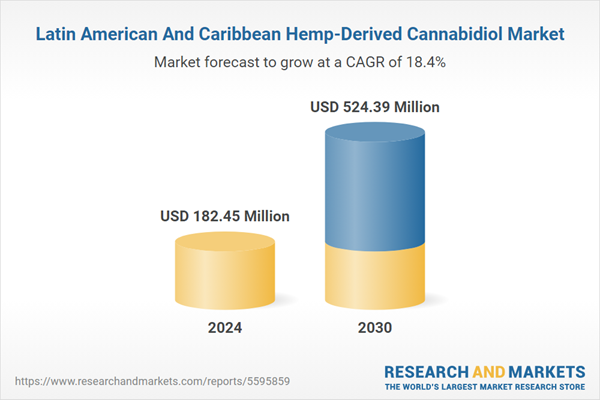The legalization of cannabidiol for medicinal purposes is also not on the same level throughout the region. Varying degrees of legalization across the countries within the region, some nations like Uruguay have legalized recreational use of marijuana, whereas in some countries like Venezuela and Guyana, utilization of marijuana, including cannabidiol for the medical purposes, is illegal.
In the countries where CBD is legal and imported from other countries against the prescriptions only, the governments in these countries are adopting to legalize the cultivation of hemp, due to the increasing acceptance and the growing demand for the product.
Cannabidiol is not only used in medicines to treat chronic ailments but in cosmetics and beauty goods as well. Plant-based products are gaining traction throughout the world and the LATAM and Caribbean countries are also fast becoming large consumers of cannabidiol-containing products. Hemp-based articles have also become quite popular, be it cosmetics or fabrics, countries in this geography are also becoming a large consumer base for such commodities.
The hemp-derived CBD can be made into several preparations, out of which full-spectrum products or terpenes account for the largest revenue share. Terpenes contain compounds that have high anti-inflammatory properties, which is more effective than the ones containing only CBD. The personal use and cosmetic care sub-segment had the largest revenue share in the end-user segment, owing to the growing demand for OTC cosmetic products which are now readily available in the market.
The fastest-growing sub-segment was the food and beverages sub-segment, owing to the increasing demand and the popularity of CBD-containing goods. Consumers do not prefer CBD oil or isolates due to their taste, which can be consumed as additives in foods and beverages.
Colombia accounted for the largest revenue share in the region owing to recent legalizations for the cultivation of hemp. Growing popularity of the cannabidiol products is also a key factor in the growth of this market, along with industrial license, personal cultivation of hemp with possession of marijuana up to a certain limit has been legitimized by the government. The fastest growth was registered in Mexico, where the demand for CBD products has been gaining a lot of popularity and with a growing consumer base, the market is forecasted to grow at a steady pace.
Latin America And Caribbean Hemp-Derived Cannabidiol Market Report Highlights
- Latin America and Caribbean hemp derived cannabidiol market size is expected to be valued at USD 524.39 million by 2030, owing to increasing legalization in the region
- Full spectrum products or Terpenes had the largest revenue share in the region due to compounds in the products having high anti-inflammatory products
- Personal care and cosmetics in the end-use segment had the largest revenue share owing to the growing popularity of cosmetic products containing cannabidiol and other derivatives
- Colombia had the largest revenue share in the region which has been due to the fact that the government in the country has legalized all forms of marijuana and its derivatives
Why should you buy this report?
- Comprehensive Market Analysis: Gain detailed insights into the global market across major regions and segments.
- Competitive Landscape: Explore the market presence of key players worldwide.
- Future Trends: Discover the pivotal trends and drivers shaping the future of the global market.
- Actionable Recommendations: Utilize insights to uncover new revenue streams and guide strategic business decisions.
This report addresses:
- Market intelligence to enable effective decision-making
- Market estimates and forecasts from 2018 to 2030
- Growth opportunities and trend analyses
- Segment and regional revenue forecasts for market assessment
- Competition strategy and market share analysis
- Product innovation listing for you to stay ahead of the curve
- COVID-19's impact and how to sustain in these fast-evolving markets
This product will be delivered within 1-3 business days.
Table of Contents
Companies Mentioned
- Khiron Life Sciences Corp
- CBD Life
- Remederi
- Pharmin
- Elixinol
- Isodiol International Inc.
- LEEF Organics
- CBD Skincare Company
- ENDOCA
Table Information
| Report Attribute | Details |
|---|---|
| No. of Pages | 120 |
| Published | November 2024 |
| Forecast Period | 2024 - 2030 |
| Estimated Market Value ( USD | $ 182.45 Million |
| Forecasted Market Value ( USD | $ 524.39 Million |
| Compound Annual Growth Rate | 18.4% |
| Regions Covered | Latin America |
| No. of Companies Mentioned | 9 |









